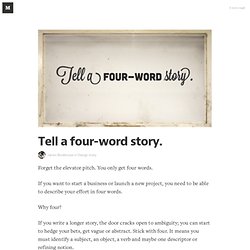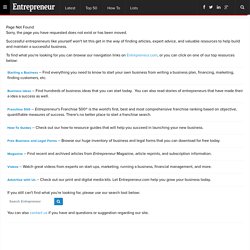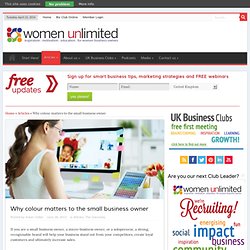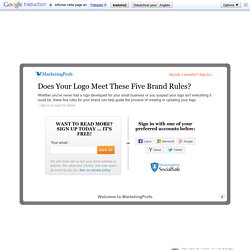

Tell a four-word story. — Design story. Forget the elevator pitch.

You only get four words. If you want to start a business or launch a new project, you need to be able to describe your effort in four words. Why four? If you write a longer story, the door cracks open to ambiguity; you can start to hedge your bets, get vague or abstract. Stick with four. If this sound impossibly hard, then keep at it.
Here’s my take on a few well-known companies: Pinterest: Organize everything you love.Facebook: Hear from your friends.Google: Easily find useful information. “There’s no better way to force a conversation about what your team values than to write your four-word story.” Here’s a step-by-step workshop you can try during your next team meeting. Step 1:Start by brainstorming all the words you can think of that relate to your company. Branding Made Personal: 3 Steps to Building a Stellar Personal Brand. Page Not Found Sorry, the page you have requested does not exist or has been moved.

Successful entrepreneurs like yourself won't let this get in the way of finding articles, expert advice, and valuable resources to help build and maintain a successful business. To find what you're looking for you can browse our navigation links on Entrepreneur.com, or you can click on one of our top resources below: Why Your Business Should Make Time for LinkedIn [Infographic]
With more than 225 million users worldwide, LinkedIn has become a tremendously popular site for job seekers and those looking to make professional connections.
![Why Your Business Should Make Time for LinkedIn [Infographic]](http://cdn.pearltrees.com/s/pic/th/infographic-entrepreneur-60603966)
Business owners are realizing the value of the networking site, too. According to data compiled by Wishpond, a maker of social media marketing applications based in Vancouver, British Columbia, 27 million brands have a LinkedIn company page. And it seems to be paying off. According to their research, 77 percent of LinkedIn members do product or service-related research on the site, and 60 percent of users have clicked on ads on LinkedIn.
Related: 10 Questions to Ask When Creating Your LinkedIn Company Page For a breakdown of how the site's members use it, take a look at the infographic below. Click to Enlarge+ Kathleen Davis is an associate editor at Entrepreneur.com. 10 Lessons College Won't Teach You. College is a step toward adulthood for many, but the transition from bachelor's degree to entrepreneur can feel a bit jarring.

Keeping your chin up, a stiff upper-lip and other empty clichés everyone says to you can't really prepare you for one really important truth: There isn't a curriculum for adulthood. Knowing this, here are a few changes to expect when you take your first steps away from college and into starting you own business. 1. Attendance is always mandatory. In college, you may have ditched class or ducked out early and still managed to pass. 2. 3.
Related: 10 Habit College Entrepreneurs Should Forget at Graduation. Why Colour Matters to the Small Business Owner. If you are a small business owner, a micro-business owner, or a solopreneur, a strong, recognisable brand will help your business stand out from your competitors, create loyal customers and ultimately increase sales.

The single, most under-used marketing tool would have to be colour. This is because colour works on the unconscious level, and if, as a business owner, you are not consciously aware of the powerful role colour plays on your customers emotions, then it will remain just that – unconscious. Shoppers place colour as a primary reason for when they buy a particular product (KISSmetrics) This means, that although the effort you put into choosing the right logo/mark, font, strap line, content and working on your after sales service are all important, the effort is potentially wasted if on a subconscious level your business brand colours are giving a completely different message. Colour in Marketing (colour psychology) Colour psychology has been around since cave man times.
Graphic Design - Does Your Logo Meet These Five Brand Rules? Many small businesses have inherited a logo from "back in the day," when nobody had time to really put together something proper.

It stuck around and managed to survive. But is your logo still working for you and performing its primary function—building recognition? When placed on your marketing collateral, does it really represent your company's identity? Whether you've never had a logo developed or you just have that doubt in the back of your head that your logo isn't everything it could be, the following five rules for your brand can help guide the process of creating or updating your logo. 1.
Is your logo appropriate for you and your industry? Take some time to study your competition and see generally what they're doing. That's not to say you have to fall in step. 2. Generally speaking, a logo should be very simple. 3. The temptation to add drop shadows, gradients, and other embellishments is very strong, but you must resist!
4. Colors carry meaning (and they can vary by culture).